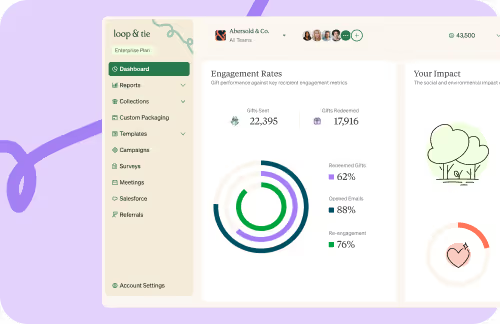Beyond Rewards: Rethinking Employee Motivation Strategies
In this blog post, we will explore why your employee reward program may not be sufficient to motivate your team to perform at their best, and discuss alternative strategies for helping your team access sustainable sources of motivation.
The Limitations of Traditional Reward Programs
Employee reward programs, like all programs used to incentivize and build more productive behaviors in your team, have limitations that can hinder their long term effectiveness. One limitation is that these programs often focus solely on extrinsic motivation, which involves providing external rewards such as bonuses, gifts, or recognition. While these rewards can temporarily boost employee motivation, they may not have a lasting impact on performance.
Another limitation is that reward programs typically follow a one-size-fits-all approach, offering the same incentives to all employees regardless of their individual needs, preferences, or job roles. This lack of personalization can lead to reduced motivation, as employees may not feel valued or recognized for their unique contributions.
Additionally, reward programs can create a sense of entitlement among employees, where they become more focused on the rewards themselves rather than the work they are doing. This can result in a decline in intrinsic motivation, as employees may start to view their job solely as a means to earn rewards, rather than finding fulfillment in the work itself.
Overall, while traditional reward programs can provide temporary boosts in motivation, they may not be enough to sustain long-term high performance and engagement among employees.
Understanding Intrinsic Motivation
To truly motivate employees to perform at their best, organizations need to tap into their intrinsic motivation. Intrinsic motivation refers to the internal drive and enjoyment that individuals derive from the work they do. It involves factors such as autonomy, mastery, and purpose.
One way to foster intrinsic motivation is by providing employees with autonomy in their work. This can be achieved by giving them more control over their projects, allowing them to make decisions, and encouraging them to take ownership of their work. When employees have a sense of autonomy, they feel more motivated and engaged, as they have the freedom to use their skills and creativity to accomplish tasks.
Another aspect of intrinsic motivation is mastery, which involves providing employees with opportunities for growth and development. Organizations can offer training programs, workshops, or mentorship opportunities to help employees enhance their skills and knowledge. When employees see that their organization invests in their growth, they are more likely to feel motivated to perform well.
Lastly, fostering a sense of purpose can greatly enhance intrinsic motivation. When employees understand how their work contributes to the larger goals and mission of the organization, they feel a sense of meaning and fulfillment. Organizations can communicate their mission and values clearly, and connect employees' work to these larger objectives. This helps employees see the purpose behind their tasks and motivates them to perform at their best.
By understanding and nurturing employees' intrinsic motivation, organizations can create a work environment that promotes long-term high performance and satisfaction.
Building a Culture of Appreciation
Employee motivation can also be boosted by creating a culture of appreciation within the organization. This involves recognizing and acknowledging employees' efforts, achievements, and contributions.
One way to build a culture of appreciation is through regular feedback and recognition. Managers can provide specific and timely feedback to employees, highlighting their strengths and accomplishments. This not only shows appreciation for their work but also helps them understand how their efforts contribute to the overall success of the organization.
In addition to feedback, organizations can implement formal recognition programs to celebrate employees' achievements. These programs can include awards, certificates, or public recognition events. By publicly acknowledging employees' hard work, organizations not only boost their motivation but also inspire others to strive for excellence.
Furthermore, fostering a supportive and positive work environment can contribute to a culture of appreciation. Encouraging teamwork, collaboration, and open communication can help employees feel valued and respected. When employees feel appreciated and supported, they are more likely to be motivated to perform at their best.
By building a culture of appreciation, organizations can create an environment where employees feel valued, motivated, and engaged.
Empowering Employees Through Development Opportunities
One effective strategy to motivate employees is to provide them with development opportunities. Empowering employees to learn and grow not only enhances their skills and knowledge but also increases their motivation and engagement.
Organizations can offer various development opportunities such as training programs, workshops, conferences, or mentorship programs. These initiatives allow employees to expand their capabilities, acquire new knowledge, and develop their expertise. When employees see that their organization invests in their professional growth, they feel valued and motivated to perform at their best.
Additionally, organizations can encourage employees to set personal development goals and provide them with the necessary resources and support to achieve these goals. This can involve assigning challenging projects, providing access to learning materials, or offering opportunities for cross-functional collaboration. When employees have a clear path for growth and development, they are more likely to be motivated and engaged in their work.
Moreover, organizations can create a culture that encourages continuous learning and improvement. This can be done by promoting a growth mindset, where employees are encouraged to embrace challenges, learn from failures, and continuously seek opportunities for growth. By fostering a culture of learning, organizations create an environment that motivates employees to continuously develop their skills and strive for excellence.
By empowering employees through development opportunities, organizations can enhance their motivation, engagement, and performance.
Creating Meaningful Connections in the Workplace
Meaningful connections and relationships in the workplace can significantly impact employee motivation and performance. When employees feel connected to their colleagues, managers, and the organization as a whole, they are more likely to be motivated and engaged in their work.
Organizations can foster meaningful connections by promoting collaboration and teamwork. Encouraging employees to work together on projects, creating cross-functional teams, or organizing team-building activities can help build strong relationships among employees. When employees feel a sense of camaraderie and support from their colleagues, they are more motivated to contribute their best efforts.
Additionally, organizations can promote positive manager-employee relationships. Managers play a
critical role in motivating their teams, and fostering a supportive and trusting relationship with their employees is essential. Regular check-ins, open communication, and providing opportunities for growth and development can help strengthen the manager-employee bond and boost motivation.
Furthermore, organizations can create opportunities for social interactions and employee engagement outside of work-related tasks. This can include organizing social events, team outings, or volunteer activities. By providing avenues for employees to connect on a personal level, organizations foster a sense of belonging and community, which in turn enhances motivation and performance.
By creating meaningful connections in the workplace, organizations can cultivate a positive and motivating work environment.
Read our 2024
Impact Report










.webp)
















